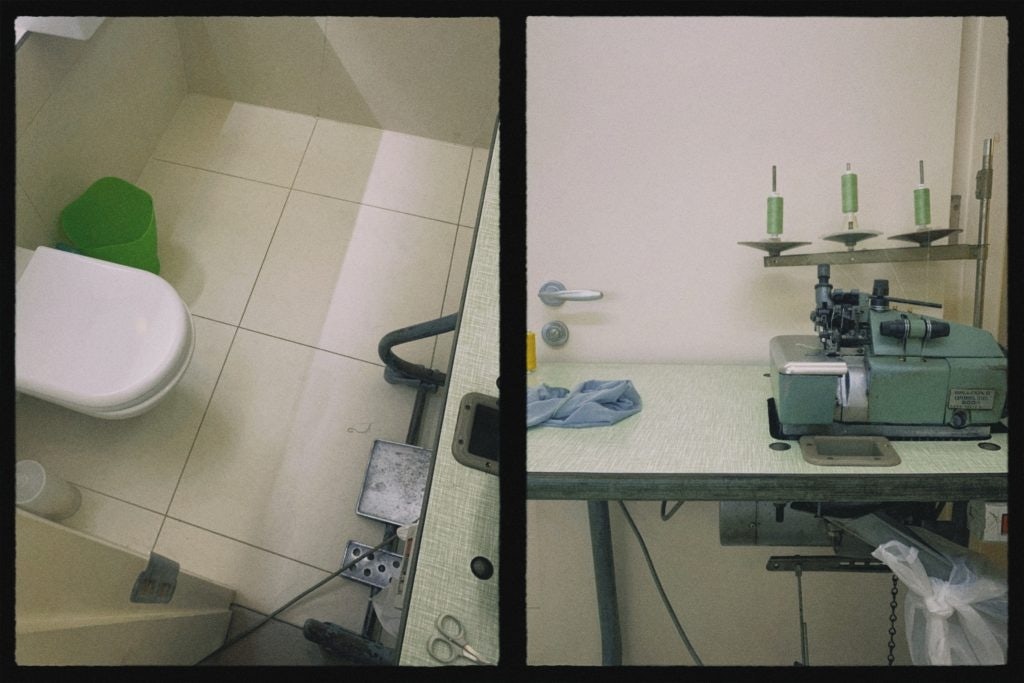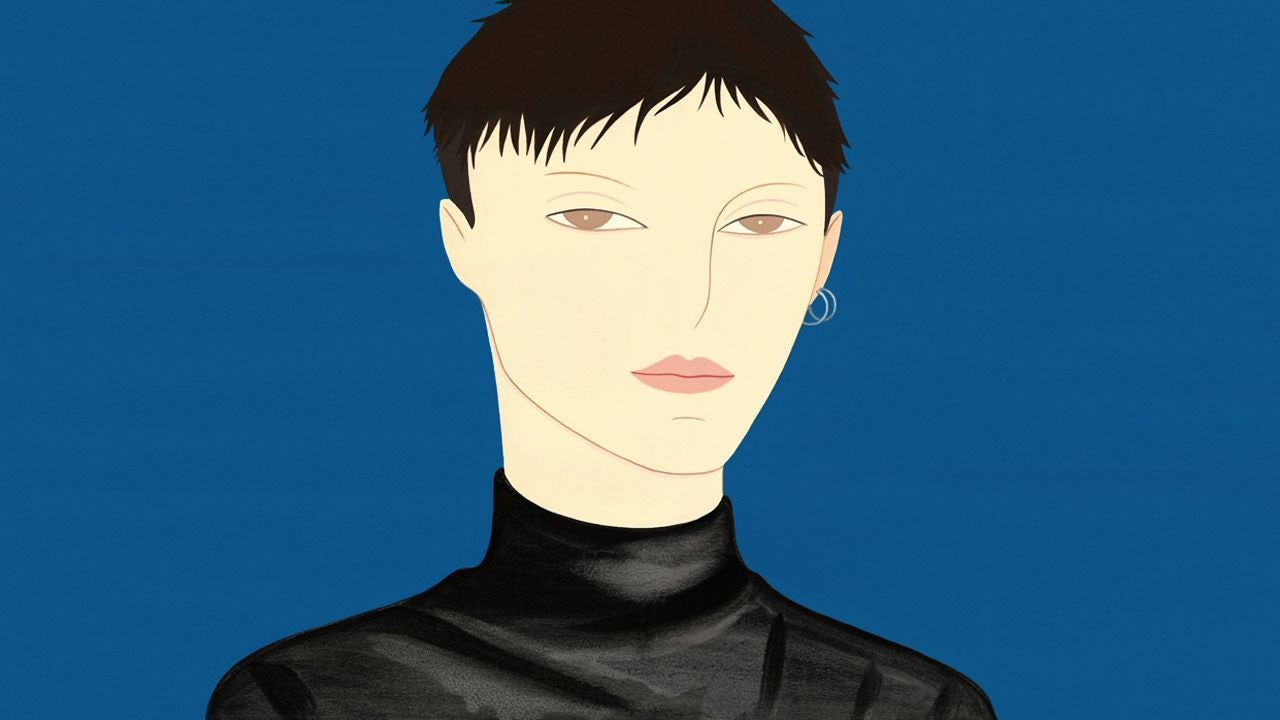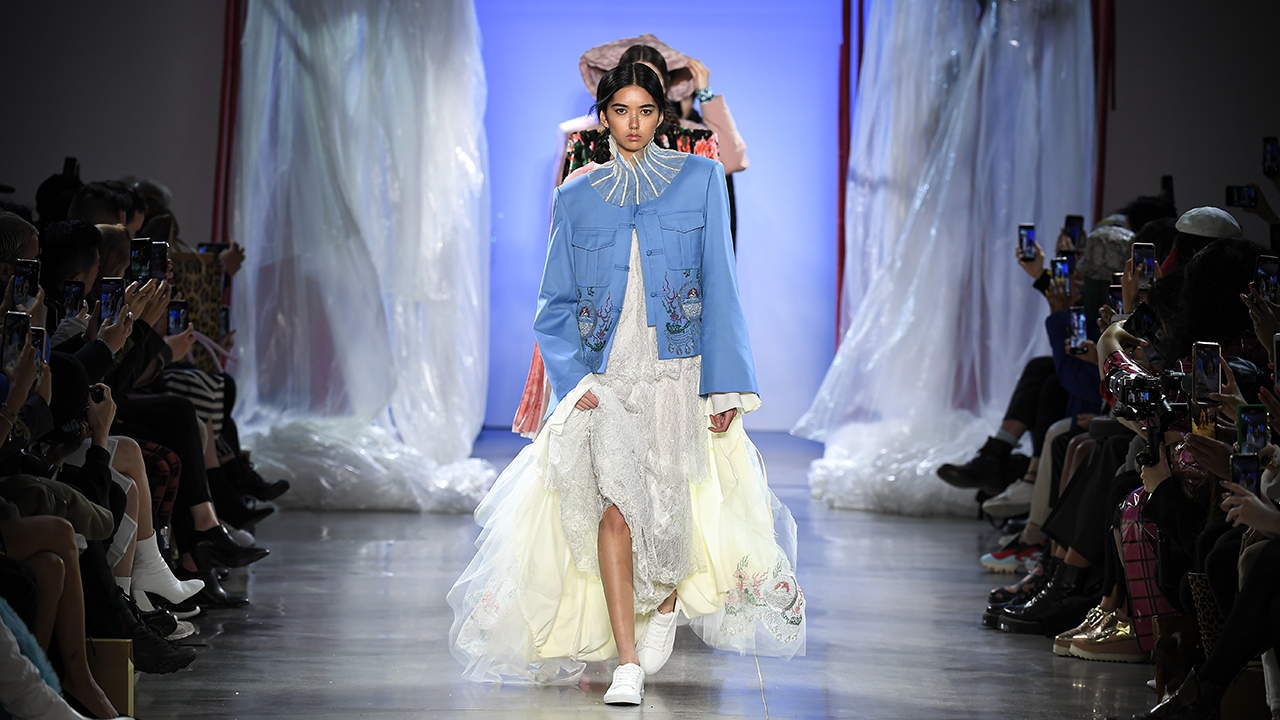One of these days, Lin Bihan would sit on the toilet for half an hour. The final year student at Central Saint Martins spent over £300 to rent a baby lock machine as the national lockdown in the UK also locked out students from using the school’s studio in late March. “I’m using a lot of elastic net in my collection, which requires the machine to lock the seams. I didn’t expect the machine to be so big and the bathroom is the only place that fits,” she laughed.
Currently, the 40 students in her BA Fashion Design Womenswear class are preparing for the graduation show on June 17 - which is now digital. Five of them are from China. Chinese students usually account for 10 - 20% of top fashion design schools in Europe and the US. As they enter their final year, their goal would have been to work at their favorite fashion maisons or become the next celebrated Chinese designer (like Uma Wang or Xander Zhou). Now the pandemic has placed a huge question mark over their future hopes and dreams.
The industry they are graduating into is also grappling to adapt to the unprecedented times, with many companies holding tightly to cash flow, department stores filing for bankruptcy and luxury brands canceling fashion week seasons. Marie Geneviève Cyr, Assistant Professor of Fashion Design at New York-based Parsons School of Design, argued that this time might also bring opportunities for young designers.
“Big brands are having a hard time adjusting because they are stuck with the traditional systems. But emerging designers are much more flexible,” she said. This graduation season, Jing Daily explores how COVID-19 upends the lives and career plans of Chinese design graduates, and why there might be a silver lining in it for all.
Life’s Crossroads#
Staying put or going back is the standard question for Chinese design students to mull over as graduation approaches; it’s a choice between staying in the markets that they have become familiar with, or returning to their home country with a specific professional environment. The additional and unexpected travel restrictions brought by COVID-19 further complicates the area of job hunting and visa renewal, which makes this an uncertain time for graduates.
Central Saint Martins’ Lin and her fellow Chinese classmates are having a change of heart due to the pandemic: “We all had plans to find jobs or start our own brand before the outbreak. But now many are talking about doing a Master’s degree so that we have a buffer before having to face the difficult job market.” For those who prefer to launch their careers abroad, further study is a strong option as it guarantees another student visa.
For those wishing to enter the workforce, graduates in the UK currently only have three months after graduation to find employment. For many, this is simply unrealistic especially given the competition in UK cities such as London. Many designers, including the duo behind Shushu/Tong — Shu Leiliu and Jiang Yutong — are among the ones who had to return as they were unable to renew their visas upon graduation.
For many going back home was always on the cards however. Shijiazhuang-native Li Xihe knew even before he attended the London College of Fashion’s MA Fashion Design Menswear, that he would return to China. However, what awaits him now is a tough Chinese market — even without the impact of COVID-19.
Li, who had worked for a few years before attending LCF said: “The entry point for fashion here is very low, you are not just competing with designers, but also celebrities and influencers, who have the manufacturing resources and sales channels to start fashion brands to sell clothes.”
To help new graduates compete in this competitive market and attract customers and press, Labelhood, the Shanghai-based independent showcase platform for emerging Chinese designers, announced it will host a physical graduation show. “Thanks to China’s recovery, we are able to do a physical show for the class of 2020!” Labelhood’s WeChat announced on June 5.
The platform is now calling for all fashion design graduates from China and overseas, who will be selected to present a runway collection in August while being mentored by independent brands such as overseas graduates Shushu/Tong and Private Policy.
How schools are adapting#
The anxiety brought about by COVID-19 does not only disrupt students’ plans but also those of their schools who are competing to turn graduation shows online, find alternatives for internships and provide employment resources.
Also in London, Istituto Marangoni’s MA Fashion Design Programme Leader Kirsten Scott’s most recent womenswear class had three out of 11 Chinese students. Students were scheduled to host industry internships in June but given the COVID-19 impact, Scott and her colleagues had to rethink the module. Instead, students are developing case studies of independent brands with “timeless identities” for a sustainable fashion design consultant. “We want our students to understand why and think about their own identities as designers of the future in response to this,” Scott told Jing Daily.
Across the pond in New York, Parsons School of Design has offered students a one-year LinkedIn membership and free marketing classes. According to BA Fashion Design graduate Yuhan Liu, this gave her the confidence to test the local job market in her field. Parsons has also been encouraging students to look beyond their chosen field and apply their design and creative skillset elsewhere.
In the Career Development section of Parsons’ website, the school has posted a Google doc, featuring insights about hiring companies and articles that encourage students to look in “growing industries” such as K-12 and Investment Portfolio Management for work. “Careers in fashion design have been more and more diversified in the past year,” said Cyr. “Assistant designer is usually the first thing in their head [when applying for a job], imagine thousands of graduates around the world apply for the same position, they need to think about how else they can apply their strength.”
A Silver Lining#
During the lockdown, many designers and brands have gone on a period of taking stock and brand repositioning. And, it’s fair to say that many students have done their fair share of reflection. Lin, the graduate who turned her bathroom into a studio, aimed to have her own fast-fashion brand after graduation but the pandemic made her recalibrate. “My thinking has been not just around whether to start a brand or not, it’s also about what kind of brand I want to start,” Lin added.

For Parsons graduate Kayden Yang, the lockdown period has given her time to reflect. “I’ve been thinking that fashion has been over saturated and perhaps, the need for traditional designer roles isn’t as high as before,” Yang said. “I knew about 3-D software like Marvelous Designer and CLO3D before COVID-19, but now that I have more time, I’m using them to explore what new possibilities there are for apparel.” She has decided to start a company in virtual fashion once she gains enough experience, she said.
Whether it’s rethinking future paths or learning new skills, Tasha Liu, founder of Labelhood said that new graduates shouldn’t be too anxious. “Employers should be empathetic about what you are going through. And, if you want to start your own business, you can use this time to think about your positioning and prepare for your first collection into the market,” Liu offered. The future of fashion is in the hands of the graduates, and this is the time for them to inject their passion and innovation to the industry.


